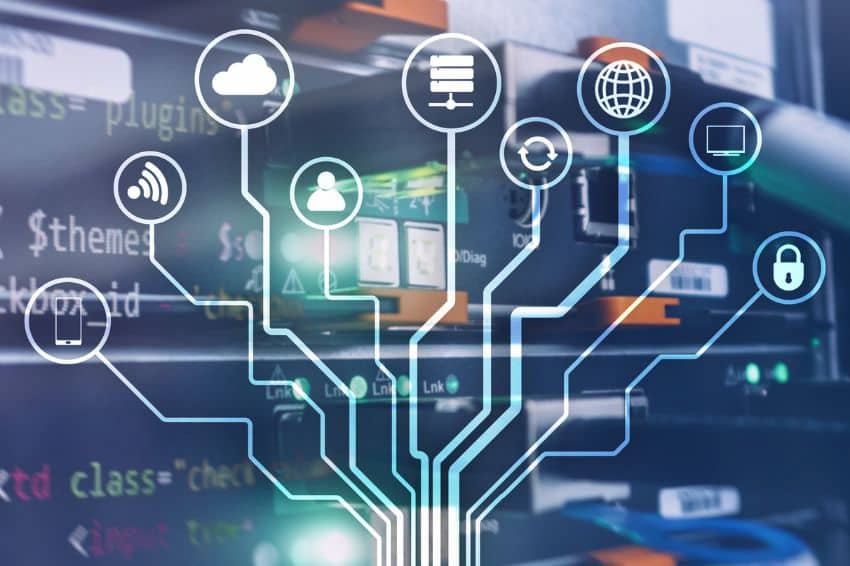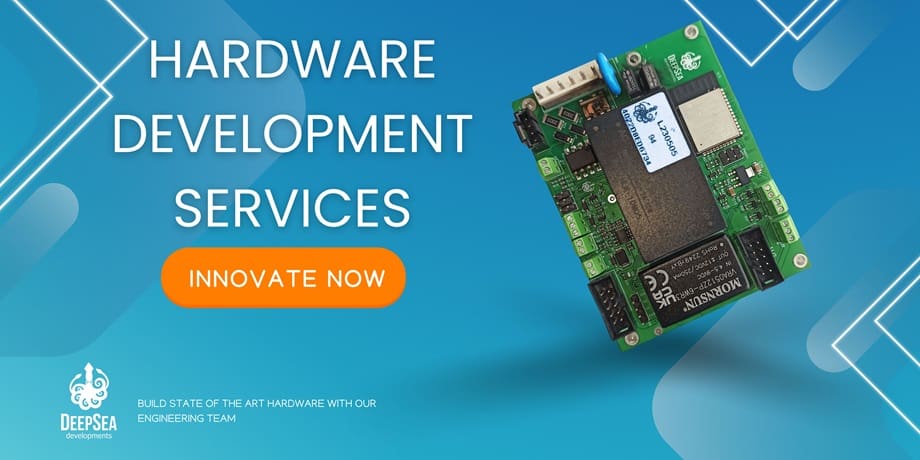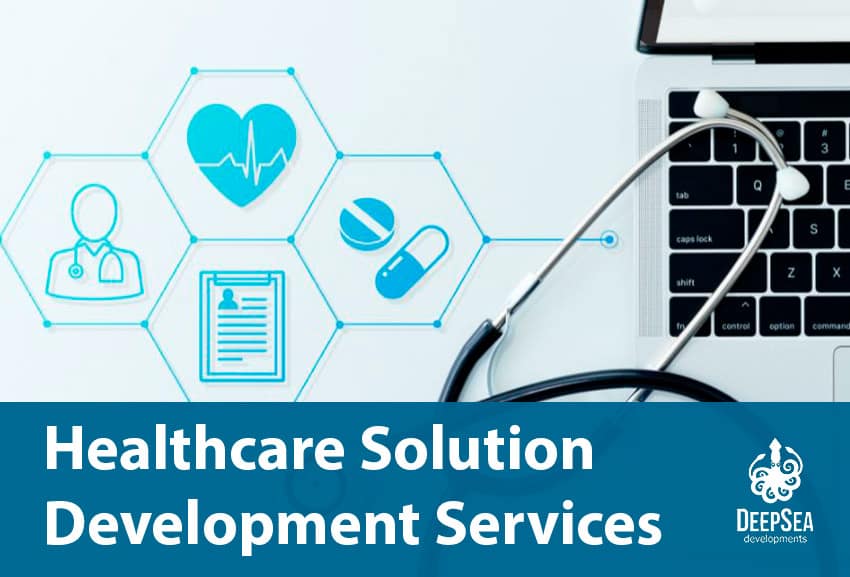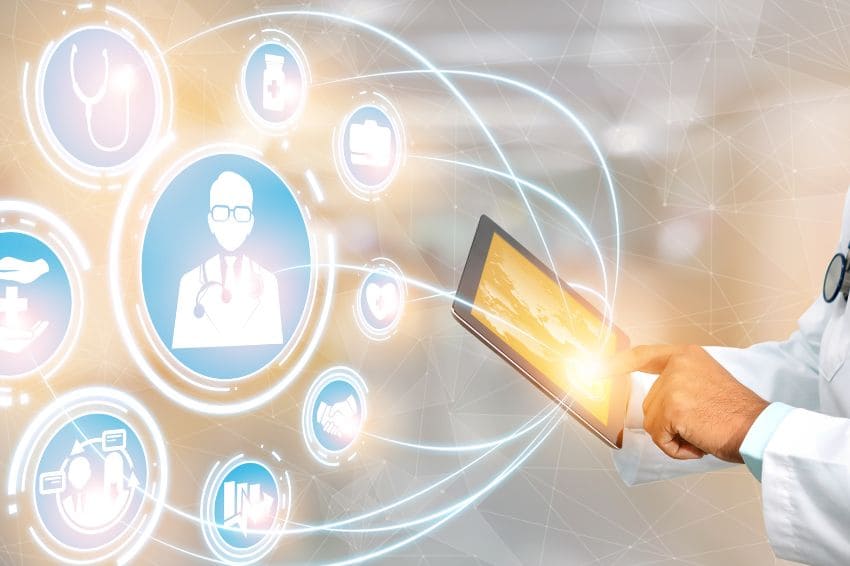In today’s rapidly evolving digital landscape, Internet of Things technologies have emerged as a game-changer, revolutionizing the way we interact with our surroundings. From smart homes and connected cities to industrial automation and healthcare systems, IoT technologies have found applications in diverse domains.
In this article, we will delve into the core components of IoT technology, highlighting the significance of sensors, actuators, communication technologies, gateways, software and cloud technologies, as well as security technologies.
What is IoT technology?
To answer this question, imagine all kinds of devices, sensors, applications, and communication protocols that combine together to collect, process, and send data over the internet without the need of human interaction.
Such technologies are integrated and set in a way that useful data can be collected and used for making informed decisions. This combination gives as a result a piece of hardware or device that has specific features that will provide useful information.
Some of the most popular IoT devices examples are vacuum cleaners. They can scan the house and clean automatically when the owner sets the time for that task.
The vacuum cleaner has integrated some motion sensors that allow it to locate itself in the surroundings, and uses infrared sensors to avoid hitting walls or obstacles.
This IoT technology is very popular nowadays at homes, since it reduces the effort of cleaning the floor with a broom. The user can set from his phone the perfect time for cleaning, or receive alerts in real-time when the cleaning process is done.
Let’s see in more detail some of the IoT technologies that are used by these kinds of products.
IoT technologies you must know
1. Sensors:
At the heart of IoT technologies, we can tell that sensors play a crucial role. With these elements it is possible to collect data from the physical world.
Sensors come in various forms:
Why are these sensors so important for IoT technologies? Well, these devices detect and measure real-time data, converting it into digital information that can be processed and analyzed. By providing valuable insights into the environment, sensors enable informed decision-making and automation.
This is why smart thermostats can measure the temperature of the house, or of specific rooms and adjust automatically to improve the temperature according to the needs of the homeowners.
2. Actuators and controllers:
While sensors perceive the physical world, actuators empower IoT systems to take actions based on the collected data. Actuators are components or systems that are in charge of moving the mechanism of a device or system.
For instance, motors, valves, and switches, respond to commands received from controllers.
Controllers, equipped with intelligence and logic, interpret sensor data and send appropriate instructions to actuators. This seamless interplay allows IoT systems to execute tasks and bring about physical changes in the environment; For instance, this is crucial in IoT energy solutions that are in charge of controlling and measuring energy consumption levels inside houses or companies.
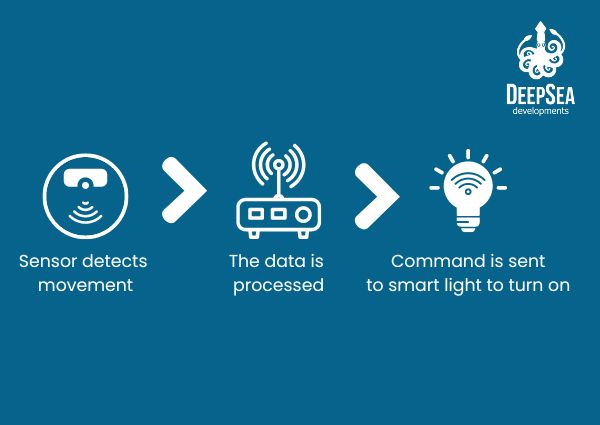
3. Communication technologies:
Communication technologies are also known as IoT protocols establish the way IoT devices communicate with each other and with the broader network.
Communication technologies play a pivotal role in enabling seamless connectivity and data exchange. Wireless protocols like Wi-Fi, Bluetooth, Zigbee, and cellular networks facilitate efficient communication among IoT devices. These technologies ensure reliable data transmission, enabling real-time monitoring, control, and coordination.
4. Gateways:
In large-scale IoT deployments, gateway technologies act as the bridge between local IoT networks and the internet. Gateways aggregate data from multiple devices, perform protocol translations, and provide a secure connection to the cloud.
They facilitate data preprocessing, filtering, and compression, optimizing network bandwidth and reducing latency. Gateways are the cornerstone of IoT scalability, enabling seamless integration with cloud platforms and enhancing overall system performance.
5. Software and cloud:
IoT applications rely on robust software frameworks and cloud platforms to process, store, and analyze vast amounts of data. These technologies enable real-time data analytics, predictive modeling, and machine learning algorithms.
IoT and cloud computing offer scalable infrastructure, enabling IoT deployments (see IoT framework) to handle massive data loads effortlessly. Additionally, software development kits (SDKs) and application programming interfaces (APIs) simplify the development and integration of IoT applications.
6. Security technologies:
Given the interconnected nature of IoT systems, security becomes paramount. IoT devices, networks, and data are vulnerable to threats, emphasizing the need for comprehensive security measures.
IoT privacy can be enhanced thanks to encryption, authentication, and access control mechanisms ensure data integrity, and confidentiality. Intrusion detection systems and firmware updates protect against unauthorized access and mitigate potential vulnerabilities.
With security technologies in place, IoT ecosystems can operate with reduced risks and enhanced trust.
This is why it is crucial to care about the IoT prototype phase, since it will outline the guidelines for using the best parameters to keep the IoT device safe and protected against potential threats. Bear in mind that a good PCB design (PCB benefits) is also necessary, and counting on a good embedded firmware (IoT with Python).
Reliability of IoT technologies
As we mentioned above, there are several elements that build a good IoT technology. However, you need to rely on a stable firmware built with a professional embedded software consultancy. On the other hand, the hardware needs to be properly designed and built, this is where you need IoT product development services to ensure que great performance of your device.
A stable and strong IoT device that uses the right sensors, apps, protocols, gateways, and firmware will be the key for attracting potential investors or customers that will purchase your product.

